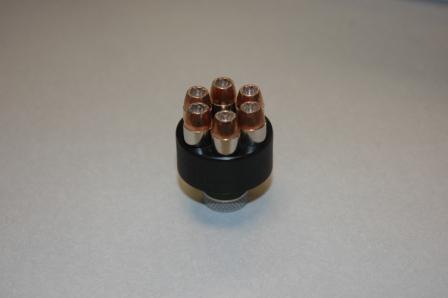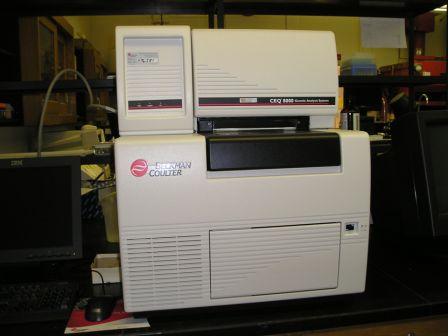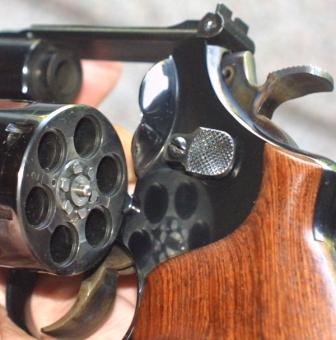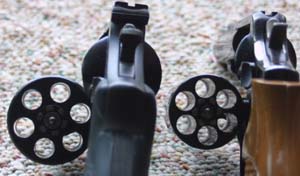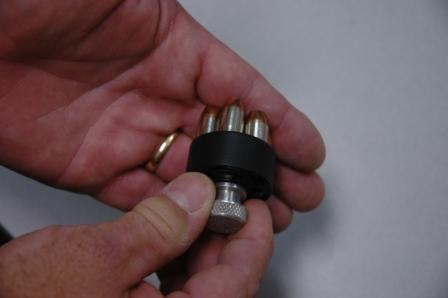Who Needs an Assault Rifle: If Barney Fife Had Speed Loaders
In the days before semi-automatics took center stage in the world of law enforcement, police officers carried revolvers as their weapons of choice. Cowboys called them six-shooters, and many modern gun enthusiasts often refer to them as wheel guns. Shooting enthusiasts love them. Even Deputy Barney Fife, one of my favorite all-time cops, carried a revolver while keeping the good folks of Mayberry safe and sound.
Why, then, if everyone loved revolvers, did police agencies make the switch from six-shooters to semi-automatics? Well, the answer is simple—law enforcement officers were often outgunned by semi-automatic-toting bad guys.
Most revolvers are capable of firing only six rounds of ammunition before needing a re-load (there are exceptions). Semi-automatics can pop off fifteen or sixteen rounds as fast as a shooter can pull the trigger. Therefore, during a gun battle officers had to reload two or three times before the crook emptied his first magazine.
Needless to say, reloading a revolver during a shootout was a problem.
Cops back in the pre-semi-auto days (me included) carried spare ammunition in rectangular leather containers called dump pouches. Dump pouches typically hold six bullets, or so, and are attached upside down to the officer’s utility belt.
To access the extra bullets, officers simply unsnapped the pouch cover and the contents “dumped” into their waiting non-gun hand. The officer then fed the individual rounds, one at a time, into the open slots in the revolver’s rotating cylinder. Needless to say, this is far easier said than done when someone is shooting in your direction.
In the photo above, Barney’s left hand rests on one of the two dump pouches on his utility belt. His index finger touches the other. The deputy-in-training also carries two dump pouches on his duty belt. Both are directly below the ticket book. Release snaps are clearly visible near the bottom of each pouch.
*Note – The thin vertical leather strap (with center snap) located to the right (your left) of the deputy-in-training’s belt buckle is called a belt keeper. Its purpose is to attach the duty belt firmly to the regular dress belt. Keepers are used to prevent the gun belt/duty belt from sliding down over the hips. In the above photo the keeper is there, but it’s obviously not used properly.
To solve the problem of slow reloading came in the form of speed loaders. Speed loaders hold six rounds of ammunition that are perfectly aligned with the bullet slots in a revolver’s cylinder. A twist of a knurled knob on the end of the speed loader releases all six rounds at once. Shooters could now easily and quickly re-load their revolvers in tense situations, even in the dark.
Revolver, speed loaders, and speed loader pouches. The pouches attach to a police officer’s duty belt.
A revolver’s cylinder is designed to swing out for reloading. The knurled button between the hammer and the wooden grip is the cylinder’s release button.
Speed loaders position rounds so they line up perfectly with the bullet slots in the cylinder.
A twist of the knob in the officer’s right hand releases all six rounds at once.
Speed loaders are a wonderful tool. However, they don’t solve all revolver woes…
There’s been much said about how killers use assault rifles and other semi-automatic weapons because of their capability to deliver a large number of rounds in a short amount of time. However, those guns are only able to fire a round when the trigger is pulled—one round for each pull of the trigger—and they’re only able to fire the number of rounds loaded into the weapon. They are NOT machine guns. I repeat, they are NOT machine guns.
But, what about revolvers (six shooters) when they’re in the hands of a trained shooter? How fast can wheel guns be fired? Well, watch closely. Don’t blink!

